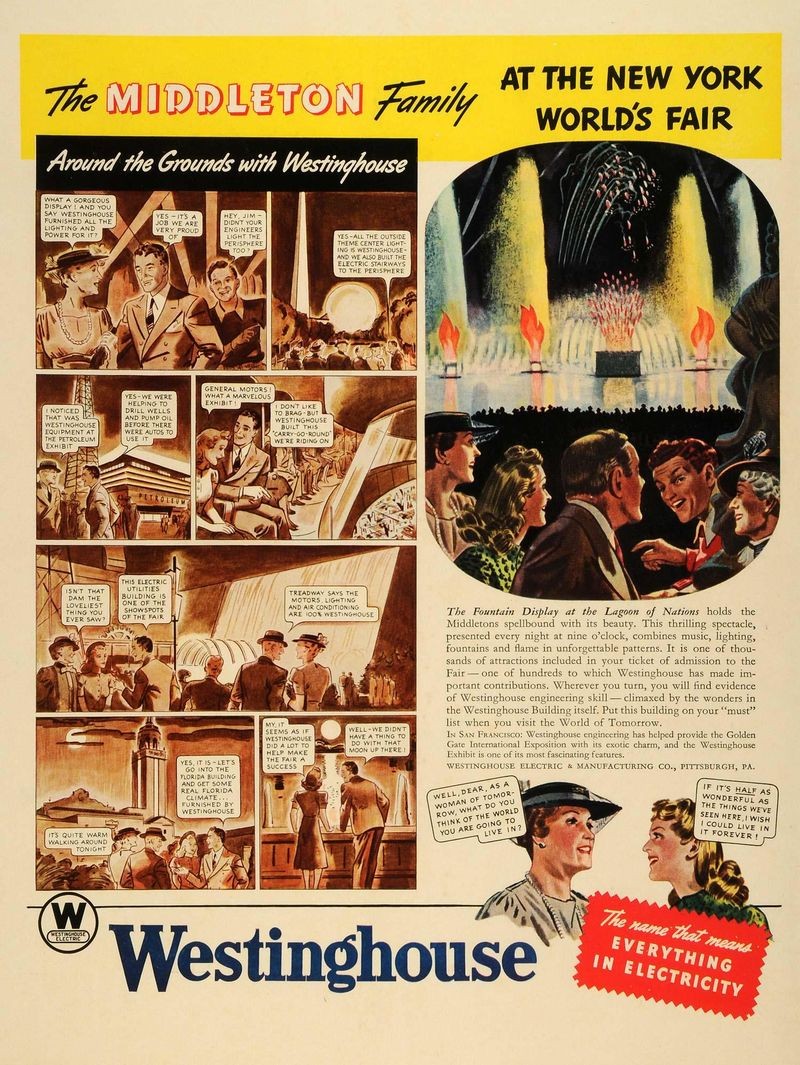
Every year since 1989, the Library of Congress has added twenty-five films to the National Film Registry. These are chosen from “culturally, historically, or aesthetically significant films” that are at least ten years old. These films run the gamut of American filmmaking, from classic feature films, to documentaries, experimental works, industrial films, and even home movies. The Computer History Museum holds a 16mm copy of the Eames’ film Powers of Ten and of The Middleton Family at the New York World’s Fair (1939).

Westinghouse Ad featuring The Middleton Family
The film was produced by Westinghouse, a technology giant of the day. Many companies made films, mostly to demonstrate products. IBM’s film division made thousands of films, often using filmmakers, writers, and film stars from Hollywood. This film is a good deal different from most of the films you’ll see from corporations as it tells a story for most of the picture that only barely intersects with Westinghouse’s contributions to the 1939 World’s Fair. The story features a young woman who has broken off an engagement with a Westinghouse engineer, Jim Treadway, to be with her art teacher who is frequently spouting his anti-capitalist opinions. The relationships are explored for more than half the film, while the rest of the film is Jim showing the family the wonders of the Westinghouse installations at the Fair. We see the wonders of 1939′s future, including an automatic dishwasher, television, and various heavy industrial pieces. At the same time, Jim Treadway and father Middleton engage in debate about what the machines mean to the American worker, and the love triangle plays out in-between the Fair scenes. The Middleton family was a part of a major marketing campaign for the Fair, appearing in print and radio ads, and the film itself was shown at the Fair.
But, you may ask yourself, why would this be in the collection of the Computer History Museum?
The answer to that question comes in the form of a segment showing a demonstration of Electro, a seven-foot tall, voice-controlled robot. Electro, along with his dog Sparko (who is not featured), would interact with a controller who was speaking commands to him. Electro had a vocabulary of more than 700 words (stored on a 78RPM record) and could blow-up balloons, walk, and even smoke a cigarette. Millions of Fair attendees witnessed demonstrations of Electro and Sparko, some even getting the chance to ‘dance’ with Electro. Electro survived the Fair, was on display at Pacific Ocean Park in Venice, CA, and was used in Hollywood films during the 1960s. Electro is currently in the collection of the Mansfield Memorial Museum in Ohio.

A still featuring Electro from Westinghouse’s “The Middleton Family at the New York World’s Fair”
The scene from The Middleton Family at the New York World’s Fair featuring Electro is roughly three-and-a-half minutes long and is some of the only remaining footage of Electro in color. The Computer Museum in Boston used this footage, along with dozens of other films, in the Smart Machines gallery (1987 to 1999). The exhibit looked at the evolution and use of robots and artificial intelligence, and a large percentage of the museum’s robotics holdings came into the collection at that time. Today, you can see several of the devices that came into the collection during the building of the Smart Machines exhibit, and many other important robotic devices, in the AI & Robotics gallery in Revolution: The First 2000 Years of Computing… including a photo of Electro at the 1939 World’s Fair!